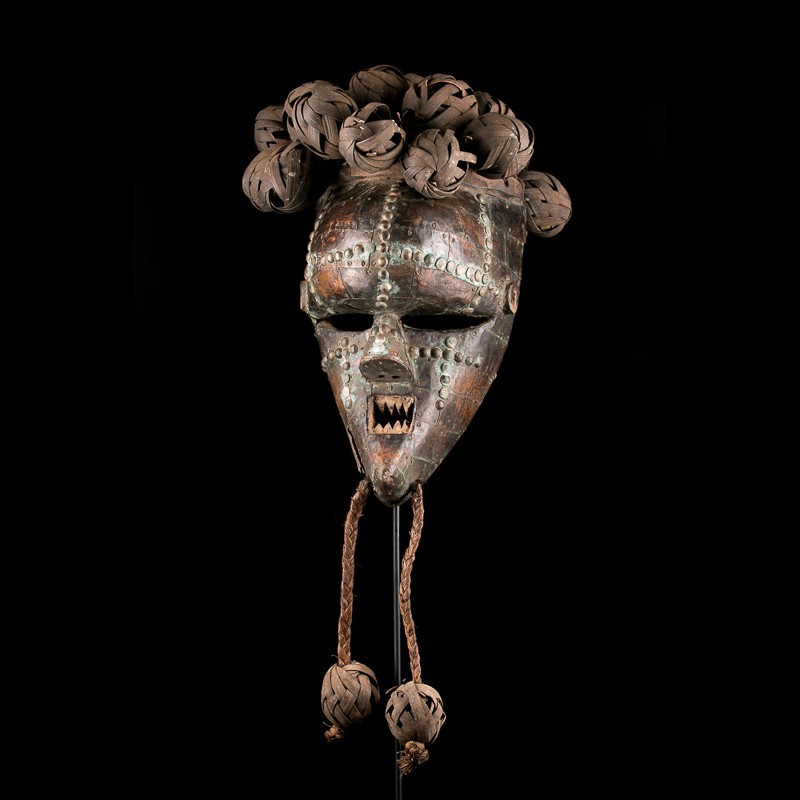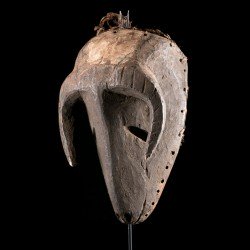





























Deprived of centralized power, the Salampasu nevertheless systematically organized themselves to defend themselves against the Lunda incursions. Although power was held by local chiefs, the latter coordinated to fight effectively against the invaders. This coordination is mainly due to the mask societies which were established, not by village but by region, which allowed the villages to be linked culturally and socially with one another.
In the Salampasu tradition, masks played an important role as social markers and sources of income. Indeed, the membership of an individual in initiatory societies required a financial investment but in return conferred a notoriety and a politico-social influence. Thus, with age, an aging individual, although physically diminished, was respected for his membership in these brotherhoods and his social rank. When he died, initiation societies organized the release of the masks for which spectators often had to pay to attend.
Various initiations exist but one of them is the almost indispensable preamble to the others: the Idangani, following circumcision and opening the door to regulated activities such as hunting.
Different types of masks exist and a hierarchy can be established between them. The best known is undoubtedly the famous Mukinka which is the one we offer here. Identifiable by its plating of more or less wide metal strips, it still has its headdress and goatee made up of wicker spheres. Classically, the gaping mouth is toothed and aggressive. The African Mukinka mask could only be possessed at the end of the Matambu initiation.
A very rare type of mask carved by the Salampasu features a ram as you can see here.
Data sheet
You might also like

Deprived of centralized power, the Salampasu nevertheless systematically organized themselves to defend themselves against the Lunda incursions. Although power was held by local chiefs, the latter coordinated to fight effectively against the invaders. This coordination is mainly due to the mask societies which were established, not by village but by region, which allowed the villages to be linked culturally and socially with one another.
In the Salampasu tradition, masks played an important role as social markers and sources of income. Indeed, the membership of an individual in initiatory societies required a financial investment but in return conferred a notoriety and a politico-social influence. Thus, with age, an aging individual, although physically diminished, was respected for his membership in these brotherhoods and his social rank. When he died, initiation societies organized the release of the masks for which spectators often had to pay to attend.
Various initiations exist but one of them is the almost indispensable preamble to the others: the Idangani, following circumcision and opening the door to regulated activities such as hunting.
Different types of masks exist and a hierarchy can be established between them. The best known is undoubtedly the famous Mukinka which is the one we offer here. Identifiable by its plating of more or less wide metal strips, it still has its headdress and goatee made up of wicker spheres. Classically, the gaping mouth is toothed and aggressive. The African Mukinka mask could only be possessed at the end of the Matambu initiation.
A very rare type of mask carved by the Salampasu features a ram as you can see here.

